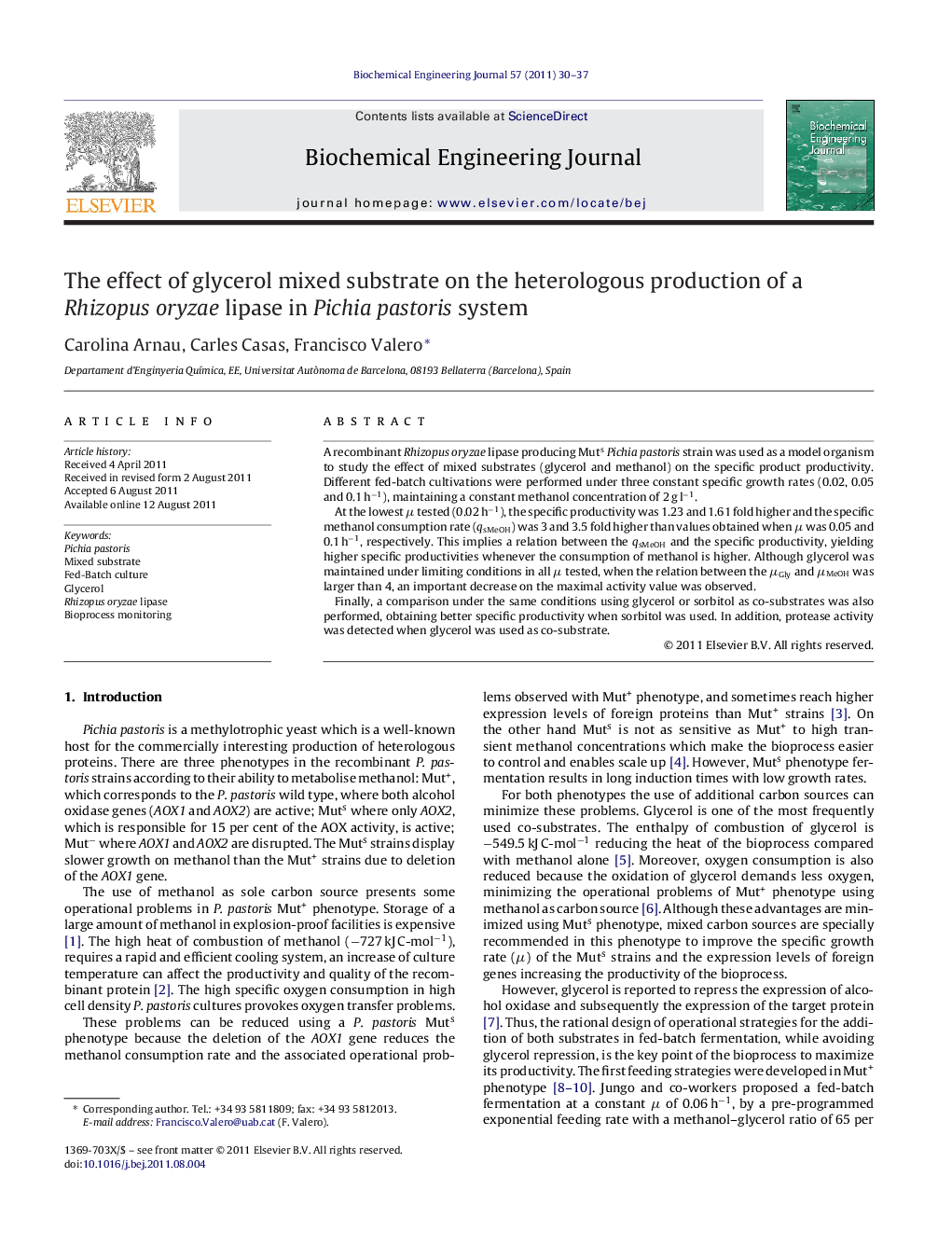| Article ID | Journal | Published Year | Pages | File Type |
|---|---|---|---|---|
| 3743 | Biochemical Engineering Journal | 2011 | 8 Pages |
A recombinant Rhizopus oryzae lipase producing MutsPichia pastoris strain was used as a model organism to study the effect of mixed substrates (glycerol and methanol) on the specific product productivity. Different fed-batch cultivations were performed under three constant specific growth rates (0.02, 0.05 and 0.1 h−1), maintaining a constant methanol concentration of 2 g l−1.At the lowest μ tested (0.02 h−1), the specific productivity was 1.23 and 1.61 fold higher and the specific methanol consumption rate (qsMeOH) was 3 and 3.5 fold higher than values obtained when μ was 0.05 and 0.1 h−1, respectively. This implies a relation between the qsMeOH and the specific productivity, yielding higher specific productivities whenever the consumption of methanol is higher. Although glycerol was maintained under limiting conditions in all μ tested, when the relation between the μGly and μMeOH was larger than 4, an important decrease on the maximal activity value was observed.Finally, a comparison under the same conditions using glycerol or sorbitol as co-substrates was also performed, obtaining better specific productivity when sorbitol was used. In addition, protease activity was detected when glycerol was used as co-substrate.
► Mixed substrates are good strategy to increase protein production in Pichia pastoris. ► Methanol set-point and μ are the key parameters in the bioprocess production. ► Glycerol represses PAOX1 at μ highest than 0.04 h−1 in Muts phenotype. ► Proteolytic activity was detected only when glycerol was used as co-substrate. ► Sorbitol was better co-substrate than glycerol for ROL production.
